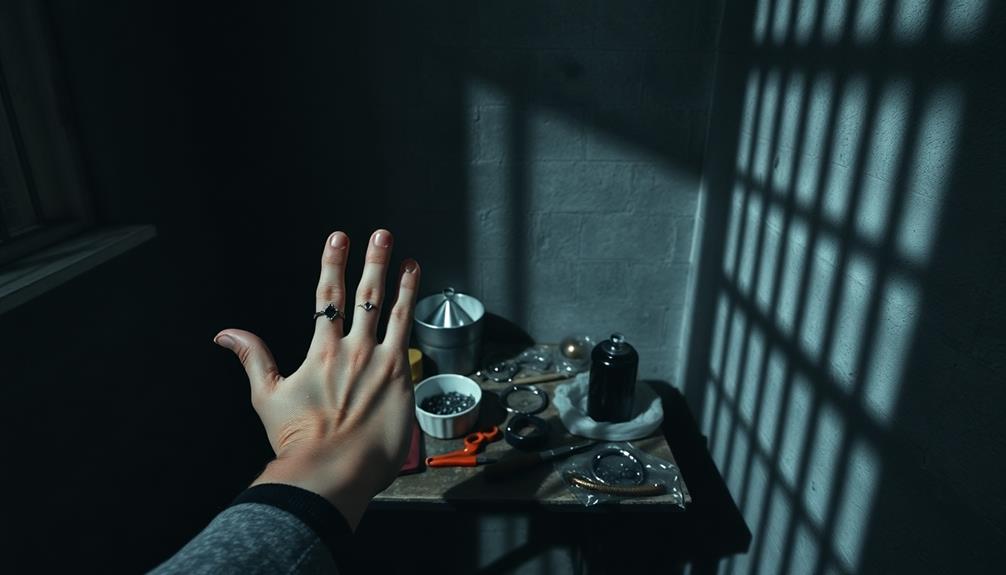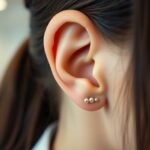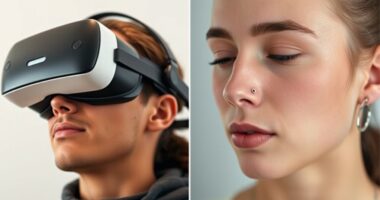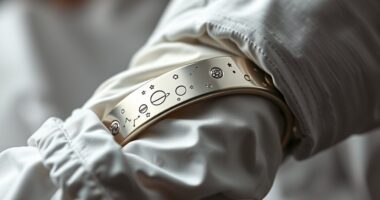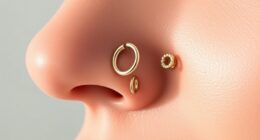Different professions view and accommodate piercings in diverse ways. In creative fields, you're likely to find acceptance and celebration of body modifications, which are seen as forms of self-expression. Meanwhile, conservative sectors, like finance and healthcare, often impose strict guidelines, favoring minimal or concealed jewelry to maintain a polished appearance. If you work in a service-oriented role, you may encounter a mix of acceptance and restrictions based on brand image. Understanding your industry's norms can help you navigate your personal style. Keep exploring to discover how workplace attitudes are evolving and what that means for you.
Key Takeaways
- Creative fields embrace body piercings as self-expression, with many professionals sporting multiple and exotic adornments.
- Conservative sectors prioritize professionalism, enforcing stricter guidelines that limit visible piercings to traditional styles.
- Healthcare regulations often require minimal and discreet jewelry to maintain hygiene standards.
- Government agencies impose strict appearance standards, favoring discreet jewelry in public service roles.
- Many workplaces are revising policies to accommodate body art, reflecting changing societal norms and increased acceptance.
Overview of Workplace Attitudes

Workplace attitudes toward piercings are evolving, with significant differences across various professions. In creative and youth-oriented fields, you'll likely find a more open mindset towards body art, including piercings. These industries appreciate self-expression, often welcoming employees who showcase their individuality through visible body modifications.
On the flip side, conservative sectors like banking and government agencies tend to enforce stricter dress codes that limit or prohibit visible piercings. Although around 40% of Millennials have at least one tattoo and 30% have piercings beyond traditional ear piercings, acceptance still varies. Many employers recognize that visible body art doesn't negatively impact hiring decisions; however, about 37% express hesitance to promote those with noticeable piercings.
Dress codes play a vital role in shaping workplace attitudes. Some companies allow a limited number of piercings, while others maintain stringent guidelines against excessive or visible body art.
As organizations increasingly revise their appearance policies to reflect Millennial preferences, you can expect attitudes to shift further, promoting a culture of inclusivity and acceptance in the workplace.
Industry-Specific Acceptance

When you explore industry-specific acceptance of piercings, you'll notice a stark contrast between creative fields and conservative sectors.
In fashion and entertainment, multiple styles thrive, while finance and government roles often impose strict restrictions.
Understanding these differences can help you navigate your own choices in self-expression within various professional environments.
Creative Industries Embrace Modifications
Creative industries like fashion, music, and advertising have thrown open the doors to body modifications, embracing piercings as a vibrant form of self-expression. In these fields, you'll often find that multiple piercings and unique styles are celebrated, reflecting a culture that values individuality.
For instance, the influence of celebrity lifestyles often sets trends that encourage personal expression through body art. Employers prioritize skills and creativity over appearance, leading to relaxed dress codes that welcome personal expression.
Interestingly, about 30% of Millennials in creative roles sport piercings beyond the traditional ear variety, showcasing a significant shift in workplace norms. This acceptance allows you to showcase your personality through your body art, whether it's tattoos or piercings.
Additionally, the rise of influencer culture has further normalized visible body modifications, inspiring organizations to embrace diverse aesthetics. As you navigate your career in a creative field, you'll likely feel empowered to express yourself freely without fear of judgment.
Ultimately, these industries not only recognize the importance of creativity but also celebrate the unique identities of their members, encouraging you to wear your modifications proudly.
Conservative Sectors' Restrictions
While many industries celebrate personal expression through piercings, conservative sectors often impose strict restrictions that prioritize a polished appearance. In these environments, body piercings are perceived as distractions that could undermine professionalism. For instance, workplaces in sectors like sales and banking typically limit visible piercings to traditional ear piercings.
| Sector | Piercing Acceptance |
|---|---|
| Sales | Only traditional ear piercings |
| Banking | Minimal visible piercings |
| Healthcare | Concealed jewelry preferred |
| Corporate Offices | Limited piercings per ear |
These policies reflect a desire for uniformity and professionalism over individual expression. In healthcare, hygiene concerns further tighten restrictions, as employers often require minimal or concealed jewelry. Some conservative workplaces may allow a limited number of piercings per ear, signaling a slight compromise. Overall, in conservative sectors, the acceptance of piercings is generally limited, with employers prioritizing a traditional image above personal style.
Government Agency Standards
Government agencies often uphold strict appearance standards that reflect a traditional view of professionalism, even as they embrace progressive values in other areas. In these settings, explicit dress codes frequently restrict visible tattoos and excessive piercings to maintain a polished image.
While some federal offices may allow a limited number of piercings per ear, the overall tendency is to favor a more conservative approach.
Hygiene concerns play a considerable role, especially in government roles related to public service and safety. These concerns influence how piercings are perceived, leading many employees to choose more discreet options.
You might find that the type and visibility of your jewelry can considerably impact your professionalism in these environments.
In essence, if you're considering a job in a government agency, it's wise to be mindful of their appearance standards. While personal expression is valued in many sectors, government settings often prioritize a conservative image.
Understanding these nuances will help you navigate the complexities of workplace expectations related to piercings and visible tattoos.
Common Piercings by Profession

When you think about piercings in different professions, it's clear that acceptance levels vary widely.
In creative fields, you might see multiple piercings as a personal statement, while healthcare roles often require a more conservative approach.
Let's explore which piercings are most popular in various industries and how they reflect each profession's culture.
Industry-Specific Acceptance Levels
Acceptance of piercings varies considerably across different professions, reflecting the cultural norms and expectations inherent in each field. In creative industries like fashion and advertising, multiple piercings, including nose and septum piercings, are often celebrated as expressions of individuality.
However, in conservative sectors such as banking, only simple ear piercings may be deemed acceptable.
The healthcare industry tends to enforce stricter policies regarding visible piercings due to hygiene concerns. Here, minimal and discreet jewelry is favored, while roles in the arts or tech sectors embrace more expressive body art.
In the service industry, especially customer-facing positions, small, unobtrusive piercings might be accepted, but visible tattoos and excessive piercings are often prohibited to maintain a polished appearance.
Government agencies generally uphold conservative standards, restricting visible piercings unless they're culturally or religiously significant.
Conversely, corporate environments are increasingly recognizing piercings as acceptable forms of self-expression. Yet, acceptance levels still vary widely, with many offices allowing only a limited number of piercings per ear while prioritizing professionalism.
Understanding these industry-specific acceptance levels can help you navigate workplace expectations effectively.
Popular Piercings by Profession
Many professionals across various fields embrace specific piercings that reflect their industry culture and personal style.
If you work in a creative sector like fashion or media, you'll likely see colleagues flaunting multiple and exotic body piercings, showcasing their unique flair.
In contrast, if you're in healthcare, you might notice most medical professionals sticking to minimal jewelry, such as simple ear studs, to maintain hygiene standards.
Corporate environments, particularly in finance and law, often favor conservative styles, limiting visible piercings to standard ear lobe adornments.
However, in service-oriented professions like hospitality and retail, there's a shift towards acceptance. Employees often sport tasteful piercings that align with the brand's image, demonstrating a blend of professionalism and personal expression.
In technical fields like IT and engineering, there's usually more leeway for body piercing, allowing you to express yourself without stringent appearance regulations.
- Creative industries: Multiple and exotic piercings
- Healthcare sector: Minimal jewelry, like ear studs
- Corporate environments: Discreet and professional styles
Concealing Piercings at Work
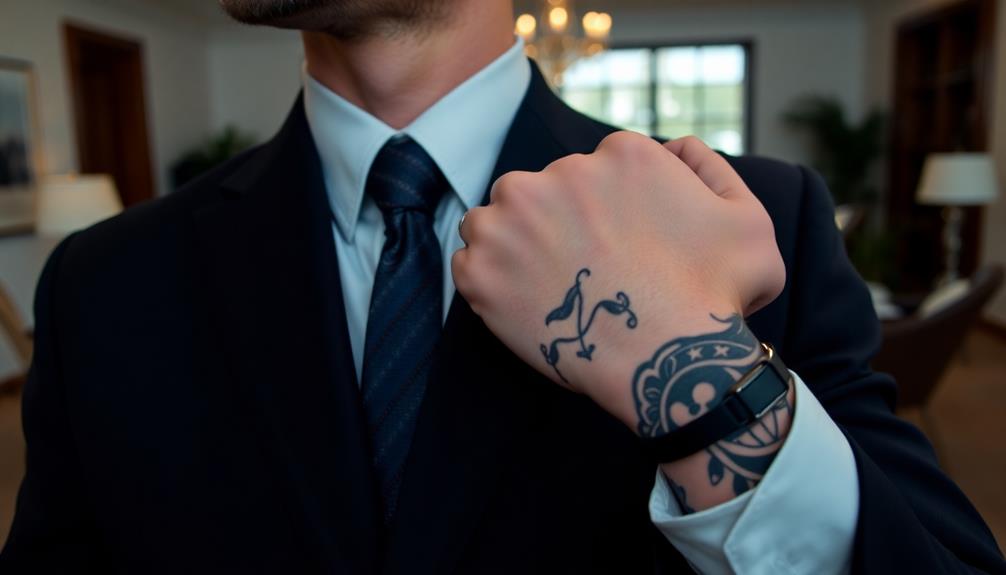
In today's professional landscape, concealing piercings at work has become a necessity for those who want to maintain a polished appearance in conservative environments. For instance, if you have ear piercings, styling your hair can effectively cover them, allowing you to blend into a formal setting.
If you sport a curved septum barbell, you can flip it up into your nostrils when needed, providing a discreet option during essential meetings.
When it comes to piercings in hidden areas, such as navel or nipple piercings, you typically won't face visibility issues. However, eyebrow and lip piercings can be more challenging to conceal without drastic measures, making them less suitable for workplaces with strict appearance standards.
For piercings like the tongue or frenulum, it's vital to maintain careful mouth control to avoid revealing the jewelry while you converse.
Ultimately, being aware of how to conceal your piercings at work can help you navigate professional environments without compromising your personal style.
Whether through strategic hair styling or choosing less conspicuous body modifications, you can maintain your individuality while adhering to workplace expectations.
Policies on Body Modifications

Workplace policies on body modifications vary considerably across industries, impacting how employees express their individuality. In conservative fields like finance and government, you might find strict rules limiting visible piercings and tattoos. On the other hand, creative sectors tend to embrace more freedom in body art, allowing for greater personal expression.
Here are some key points to reflect on:
- Many workplaces have explicit dress codes addressing body modifications.
- Research shows 31% of employers are hesitant to promote employees with visible tattoos, while 37% share similar concerns about piercings.
- Federal offices generally don't factor piercings into hiring decisions, reflecting varying acceptance levels.
As companies evolve, some are revisiting their policies to better accommodate body art. They're even implementing diversity and inclusion training to foster an environment where personal expression is recognized.
However, if you're maneuvering a corporate environment, it's essential to understand these policies, as they can greatly influence your career path. Balancing your desire for self-expression with workplace expectations can be a delicate act, but being informed helps you make the right choices.
Legal Considerations

Maneuvering the legal landscape surrounding body modifications like piercings and tattoos can be tricky for both employees and employers. While tattoos and piercings aren't considered fundamental constitutional rights, employers can enforce appearance regulations if they deem it necessary for professionalism.
For instance, California recognizes tattoos as protected speech under the First Amendment, which may shape how employers craft their policies on body art. Additionally, understanding the potential impact of divorce rates on personal expression in the workplace may influence company culture and policies.
Employers are legally allowed to impose reasonable appearance standards; however, these standards must be balanced against potential discrimination claims related to visible body art. Notable cases, like Scavone v. Pennsylvania State Police, highlight how courts have upheld employer rights to reject candidates based on visible tattoos or piercings. This illustrates the complex legal considerations both sides face.
As many companies lean towards a more inclusive approach to body art, some still maintain strict policies that can affect hiring and promotion opportunities.
This ongoing tension between personal expression and professional appearance underscores the importance of understanding the legal framework surrounding body modifications. Ultimately, both employees and employers must navigate these legal waters carefully to avoid disputes and guarantee fairness in the workplace.
Future Trends in Body Art

As societal norms continue to evolve, the acceptance of body art, particularly piercings, is becoming more prominent in professional settings. You might notice that Millennials and Generation Z are leading this cultural shift, with a significant percentage choosing to express themselves through body art. This trend indicates a change in how workplaces perceive personal expression.
- Increased visibility of piercings in creative industries: Fields that encourage individuality are more likely to embrace diverse appearances.
- Evolving dress codes: Many employers are revising policies, recognizing that skills and qualifications should outweigh personal appearance.
- Legal protections for body art: As some states classify tattoos as protected speech, future policies may further support body art in the workplace.
However, tensions still exist. Research shows that while acceptance is growing, many employers remain hesitant about visible tattoos and piercings when it comes to promotions.
As you navigate your career, be mindful that while acceptance is on the rise, traditional norms still play a role in how body art is viewed in various professions. The future seems promising, but change won't happen overnight.
Tips for Professionals

Maneuvering the world of piercings in a professional setting can be tricky, but with the right approach, you can express your individuality while still making a strong impression.
Start by observing your workplace's norms regarding piercings. In creative industries like fashion, ear piercings and other visible adornments may be celebrated. However, in conservative fields such as finance, you might face stricter dress codes. Being aware of how personal expression, such as piercings, can impact perceptions in the workplace is essential for maintaining professionalism and narcissistic behavior can lead to occasional misunderstandings about personal choices.
Before your first day, take note of the type of jewelry your colleagues wear. This common sense observation can help you gauge what's acceptable. If you're in a conservative environment, opt for simple and discreet jewelry, like studs or small hoops. These choices minimize scrutiny while allowing you to showcase your style subtly.
If you have visible piercings, consider using long hair to cover earrings or wearing jewelry that can be flipped up, such as curved septum barbells. This tactic can maintain a professional appearance.
Frequently Asked Questions
How Are People With Piercings Perceived?
People perceive you with piercings in varied ways; some admire your self-expression, while others might judge you based on traditional standards. Ultimately, their views depend on personal biases and the context of your appearance.
What Professions Allow Piercings?
In a world where expressions shine like stars, creative fields such as fashion and tech often welcome piercings. Service industries usually embrace individuality too, while healthcare and corporate roles remain more cautious about visible adornments.
How Do Jobs Feel About Piercings?
Jobs often have mixed feelings about piercings. While some embrace individuality, others see them as unprofessional. It's essential to know your workplace's culture and policies before deciding how to express your personal style.
Can Jobs Discriminate Against Piercings?
Yes, jobs can discriminate against piercings. Employers often enforce appearance policies, and while some sectors are more accepting, others may view visible piercings as unprofessional, impacting your promotion opportunities and overall job prospects.
Conclusion
In today's diverse work environment, embracing individuality through piercings can enhance your personal expression without compromising professionalism. While some might worry that piercings could hinder career advancement, many industries are becoming more accepting of body art. By understanding your workplace's culture and policies, you can confidently showcase your style. Remember, it's all about balance—keeping your unique flair while respecting your professional setting. So go ahead and express yourself; your talents are what truly matter!
Hi, my name is Danielle, and I’m an author for piercings-body.com. I have a passion for writing and love to share my knowledge on all things body piercing-related. I’m also a huge advocate for safe body modification practices and believe everyone should be able to make informed decisions about their bodies. When I’m not writing or blogging, I enjoy spending time with my family and friends, practicing yoga, and exploring new places.


